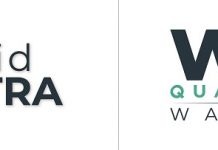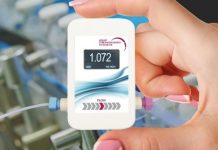Following a commitment made by the European Commission earlier in the year to include ‘all relevant known’ Substances of Very High Concern (SVHCs) in the Candidate List by 2020, ECHA published in December an implementation plan to achieve this goal.
The plan explains how the substances thought to meet the SVHC criteria will be prioritised and assessed over this period, whilst also defining the information which will be made publicly available.
One of the objectives of REACH is the substitution of substances presenting significant risk with less hazardous alternatives. Steps towards achieving this aim are taken through the Authorisation process in Title VII. Authorisation requires those in the EU/EEA wishing to place on the market or use identified substances (listed in Annex XIV) to demonstrate that the risks are adequately controlled or that there are no suitable alternatives available and that the societal benefits of using the substance outweigh the risks.
The substances which may become subject to Authorisation are termed Substances of Very High Concern (SVHC) and appear on a ‘Candidate List’, updated biannually. To be included on this list, a substance must be identified as either: a category 1A or 1B carcinogen, mutagen or reprotoxin (CMR); Persistent, Bioaccumulative and Toxic (PBT); very Persistent and very Bioaccumulative (vPvB); or displaying an equivalent level of concern (e.g. endocrine disrupters or respiratory sensitisers). Following an update in December, there are now 151 substances on the Candidate List; although it is known that there are more than 400 substances fulfilling the criteria and not on the list.
The 2020 SVHC Roadmap implementation plan sets out a two-phase process looking first at the screening of registration dossiers and other REACH/CLP databases for ‘known’ substances meeting the SVHC criteria, and then at the analysis of Risk Management Options (RMO) to identify those which are ‘relevant’ in the context of the roadmap. In the initial screening phase, individual activities are planned for each of the main substance groups identified, however the basic approach will be the same for each. The ‘core activity’ will be the screening of dossiers for substances fully registered for non-intermediate uses, whilst a ‘supplementary activity’ will be carried out with the intention of identifying similar substances which have not been registered, or are registered as intermediates. It is expected that this activity will lead to the identification of a large number of substances; additional criteria may be developed to further prioritise those for assessment, such as include high annual volumes of use or registered uses with a significant potential for exposure.
The second phase of the implementation, the RMO analysis, is undertaken with the aim of establishing whether Authorisation is the most appropriate route to address the concern associated with the substance. It will be conducted on a case-by-case basis and establish: i) whether registrations include uses within the scope of Authorisation; ii) that the known uses are not already regulated by specific EU legislation that provides pressure for substitution and iii) that there is no need or basis for a Restriction and no overarching reasons as to why substitution is not the desired outcome for the substance.
In order to ensure stakeholders and the public remain informed about the roadmap and implementation plan, an ‘SVHC Roadmap’ section has been added to the ECHA website. Via this section annual reports will be published, from March 2015, providing a summary of activities carried out in the previous year as well as an outline of activities planned for the following year. In addition, a ‘Public Activities Coordination Tool’ (PACT) will be established providing substance-specific information on activities.
Whilst no target figure has been set for the number of SVHCs which will be identified by 2020, it is apparent that there will be a significant number of additions to the Candidate List over the next six years, and an associated push to move those priority substances on the list to Annex XIV. Inclusion of a substance on Annex XIV, the ‘Authorisation List’, presents a potential threat to business continuity, so organisations would be advised to follow the progress of the roadmap closely.
If you would like to know more about this area of REACH, come along to our workshop ‘The “A” of REACH: an introduction to Authorisation’ on 1 May. Please visit the training page on our website at http://www.reachready.co.uk/services_training.php to find out more or come along to Jo Lloyd’s talk on Authorisation at the Chemicals Northwest REACH conference on 4th June.













